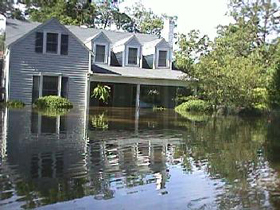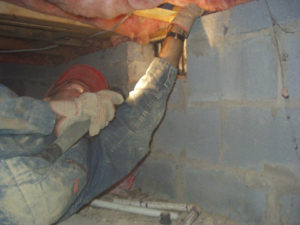Pest Problems After Storms – Termites
go.ncsu.edu/readext?429373
en Español / em Português
El inglés es el idioma de control de esta página. En la medida en que haya algún conflicto entre la traducción al inglés y la traducción, el inglés prevalece.
Al hacer clic en el enlace de traducción se activa un servicio de traducción gratuito para convertir la página al español. Al igual que con cualquier traducción por Internet, la conversión no es sensible al contexto y puede que no traduzca el texto en su significado original. NC State Extension no garantiza la exactitud del texto traducido. Por favor, tenga en cuenta que algunas aplicaciones y/o servicios pueden no funcionar como se espera cuando se traducen.
Português
Inglês é o idioma de controle desta página. Na medida que haja algum conflito entre o texto original em Inglês e a tradução, o Inglês prevalece.
Ao clicar no link de tradução, um serviço gratuito de tradução será ativado para converter a página para o Português. Como em qualquer tradução pela internet, a conversão não é sensivel ao contexto e pode não ocorrer a tradução para o significado orginal. O serviço de Extensão da Carolina do Norte (NC State Extension) não garante a exatidão do texto traduzido. Por favor, observe que algumas funções ou serviços podem não funcionar como esperado após a tradução.
English
English is the controlling language of this page. To the extent there is any conflict between the English text and the translation, English controls.
Clicking on the translation link activates a free translation service to convert the page to Spanish. As with any Internet translation, the conversion is not context-sensitive and may not translate the text to its original meaning. NC State Extension does not guarantee the accuracy of the translated text. Please note that some applications and/or services may not function as expected when translated.
Collapse ▲
Flooding can erode termiticide-treated soil or deposit silt and debris on top of it providing termites with a “bridge” onto and into your house.
Although termites are not an immediate concern following severe storms, flooding can ruin a termite treatment around and under a home. Moving floodwater can erode the treated soil or deposit silt and debris along the foundation. This deposited material can provide a “bridge” for termites to cross over the original termiticide-treated soil. For houses with termite baiting systems, the bait stations may become covered or filled with soil or even washed away. If the baits become contaminated with chemicals in the flood water or become moldy or unacceptable to termites and will need to be replaced. Your pest control service can determine if that is needed.

Cracks in foundation walls could be a sign that soil beneath your foot has eroded and is causing the footer to settle.
Storm damage also creates “conditions conducive to termites”. Water-logged soil and wood in the crawlspace need to be dried (or the wood replaced) as soon as possible. Cracks in foundation walls (as seen in the image at right) could mean that the soil beneath your foundation footer has eroded, As the footer settles, it will crack as will the foundation wall. These cracks provide termites with entry points to the house. Damage to roofs and structural wood that remain unrepaired for months (or years) may allow termites to establish above-ground infestations, i.e., a termite colony with no apparent ground contact. These secondary infestations are rarely, if ever, covered by a termite protection contract and treating the soil will not eliminate them.
Tree stumps and wood debris in the yard will eventually become food source termites, but that should not be any big surprise. Termites are part of nature’s way of recycling dead wood. You really do want termites in your yard; but you do not want them in your home.
 With all of the other problems and worries with storm cleanup and repair, you do not need the additional worry of rushing to get your house retreated for termites. However, as you plan any major repairs to your home, make sure that plan includes protecting your home from termites. If you have a termite protection contract, the company may contact you first and request a re-inspection. If they determine that a retreatment is needed due to the storm, check with your insurance company to see if the retreatment is covered under your homeowner’s policy as part of storm damage.
With all of the other problems and worries with storm cleanup and repair, you do not need the additional worry of rushing to get your house retreated for termites. However, as you plan any major repairs to your home, make sure that plan includes protecting your home from termites. If you have a termite protection contract, the company may contact you first and request a re-inspection. If they determine that a retreatment is needed due to the storm, check with your insurance company to see if the retreatment is covered under your homeowner’s policy as part of storm damage.
COMMUNICATION is key to preventing termite problems particularly if you have a termite contract. Keep in mind that home repairs that require removing soil around the foundation also remove the protective termiticide treatment. In such situations, the repair work could actually void your termite contract. If repairs to your home are likely to disturb the soil around the foundation (inside or out), or if you decide to install a drainage system around the house, then contact your pest control company BEFORE the work even starts.
For more information about termites and termite control, visit the following:
NOTE:
While there should not be any problems with the *legitimate* pest control companies in this state, you should also beware of anyone who tries to convince you that you NEED to have your house treated without providing proof that such a treatment is necessary. Always ask to see the person’s pest control license, certification card or registered technician’s card identifying them as an employee of a pest control company. If they can’t produce one of these identification cards, then do not sign a contract with them. Don’t be pressured into getting ANY pest control treatments done quickly if you are unsure of what you are being told. When in doubt, contact the NC Dept. of Agriculture and Consumer Services-Structural Pest Control & Pesticides Division at (919) 733-6100.


